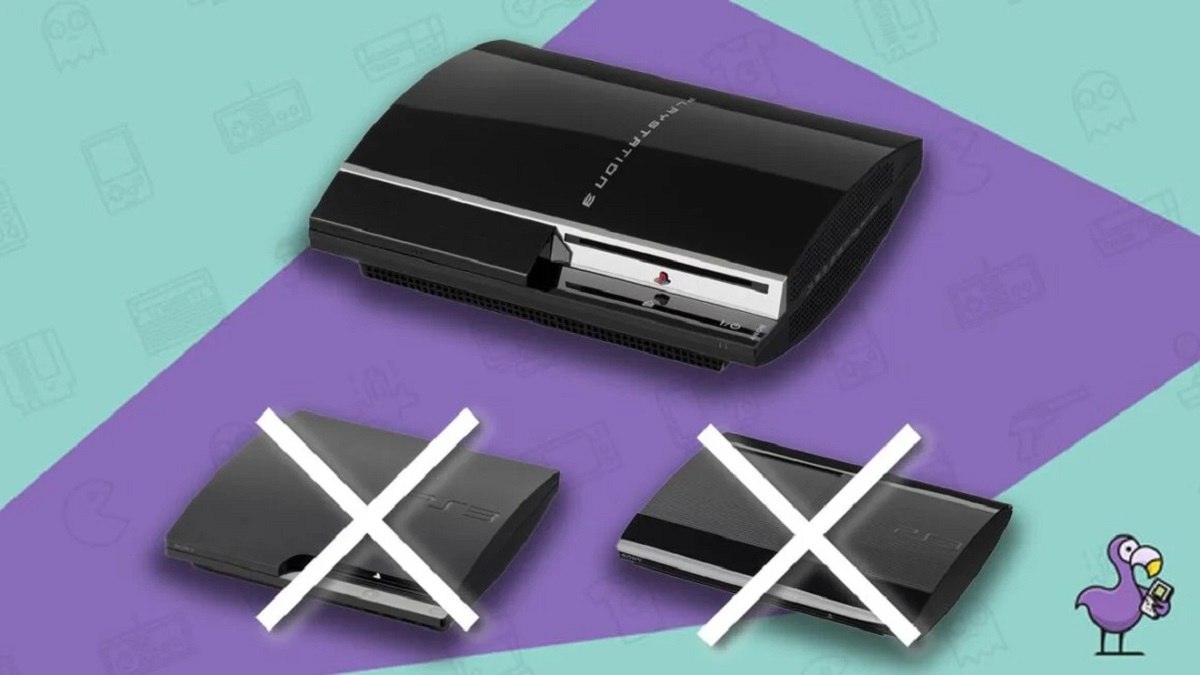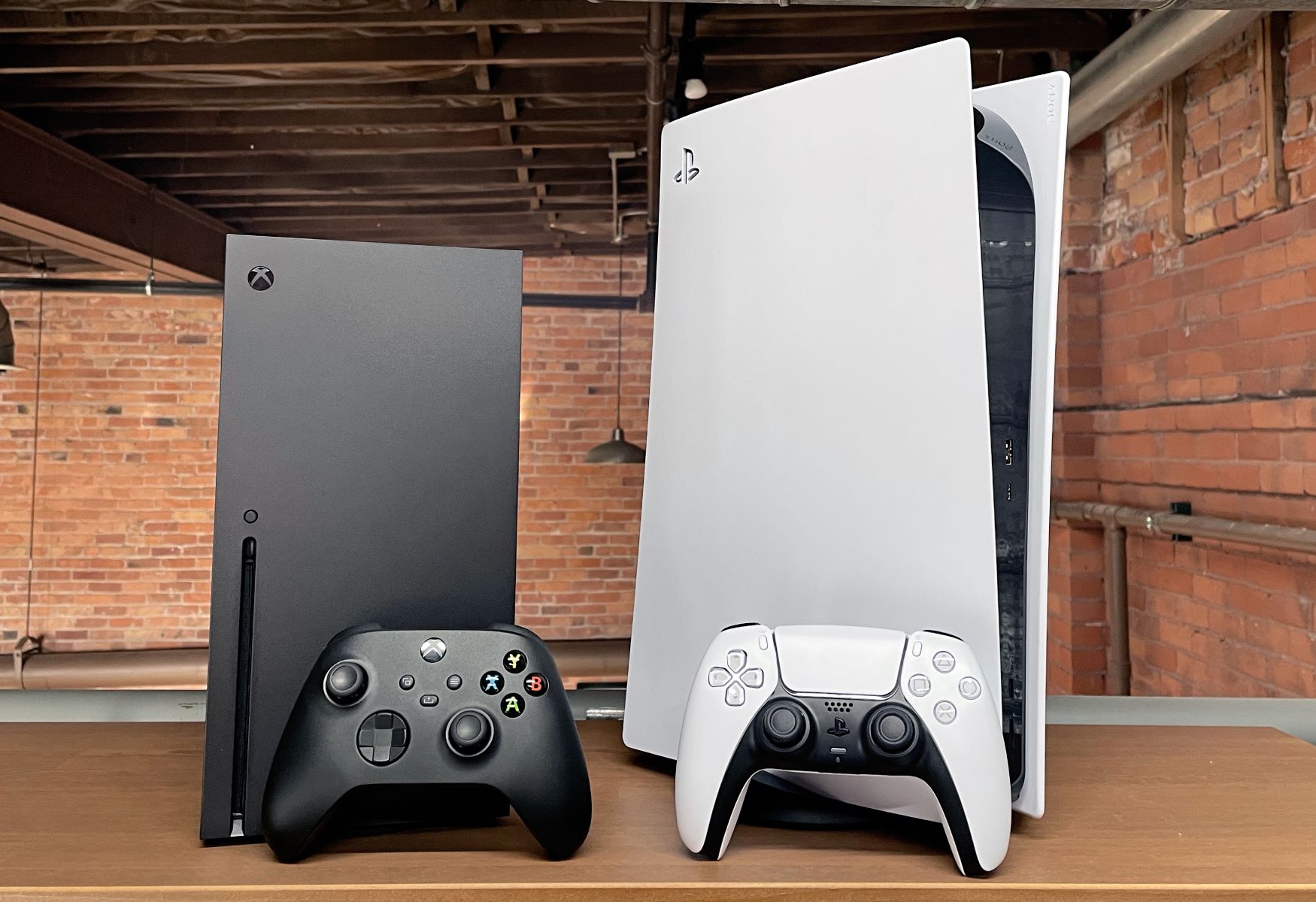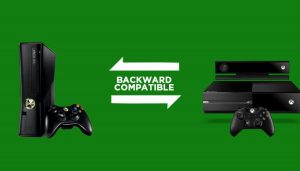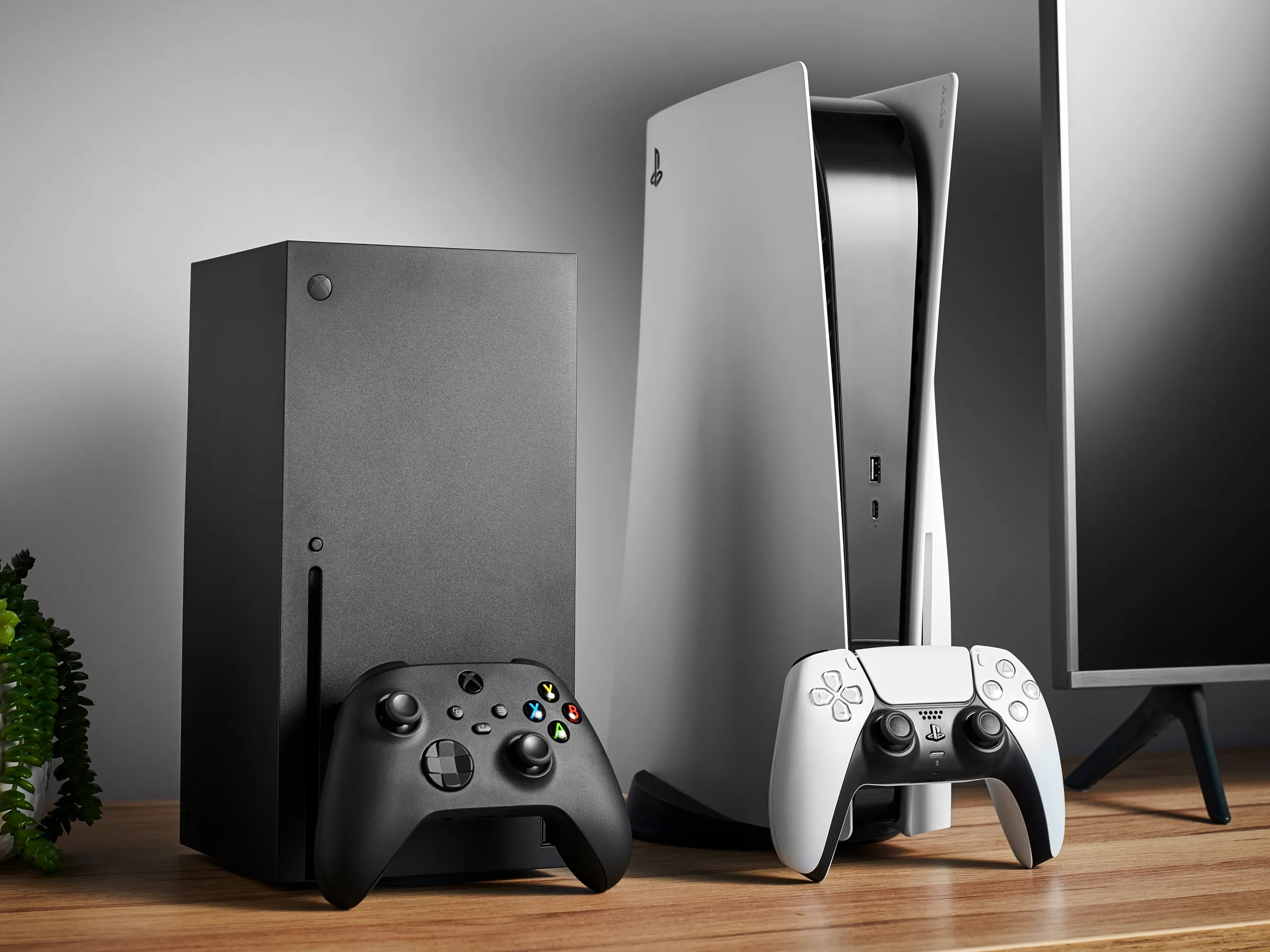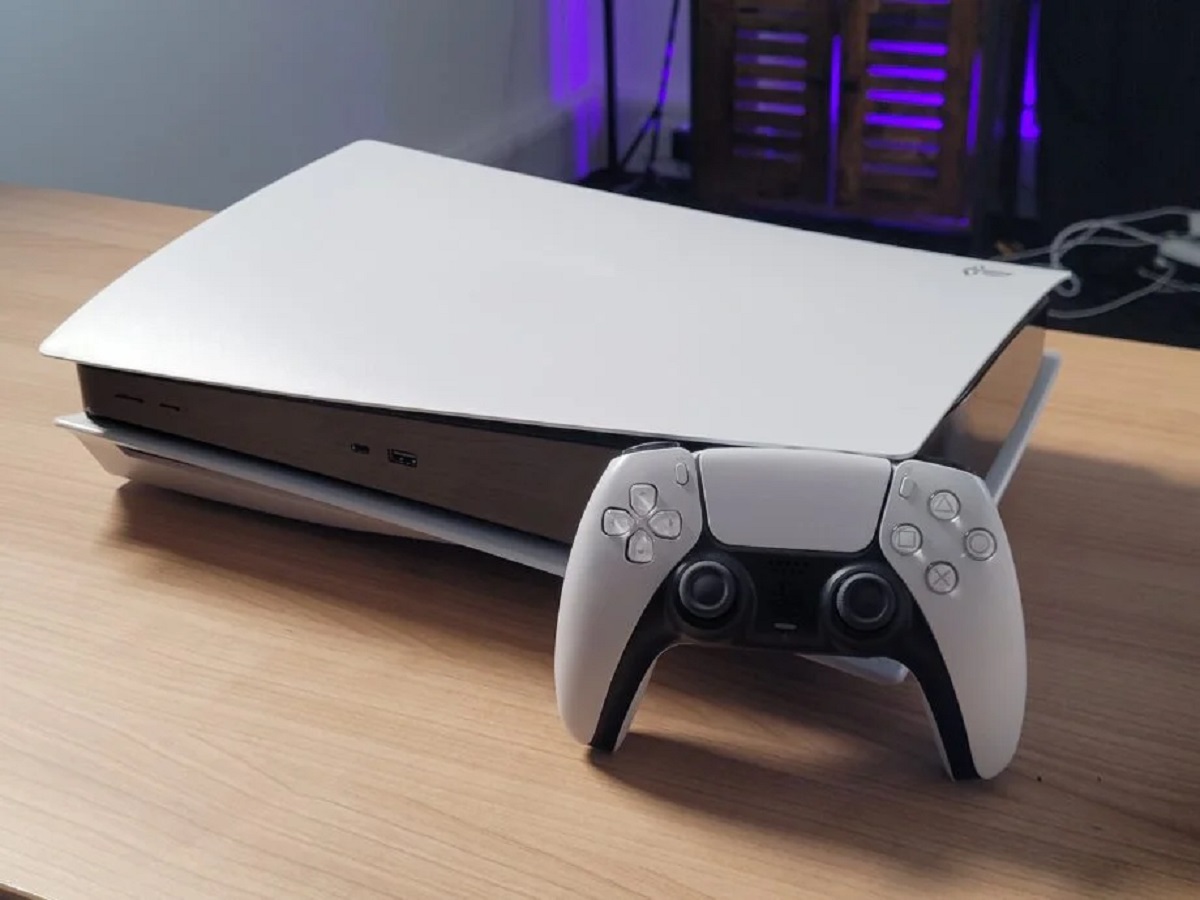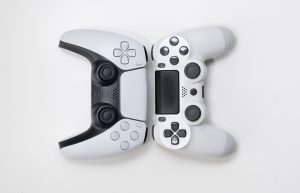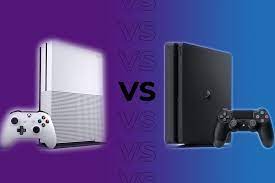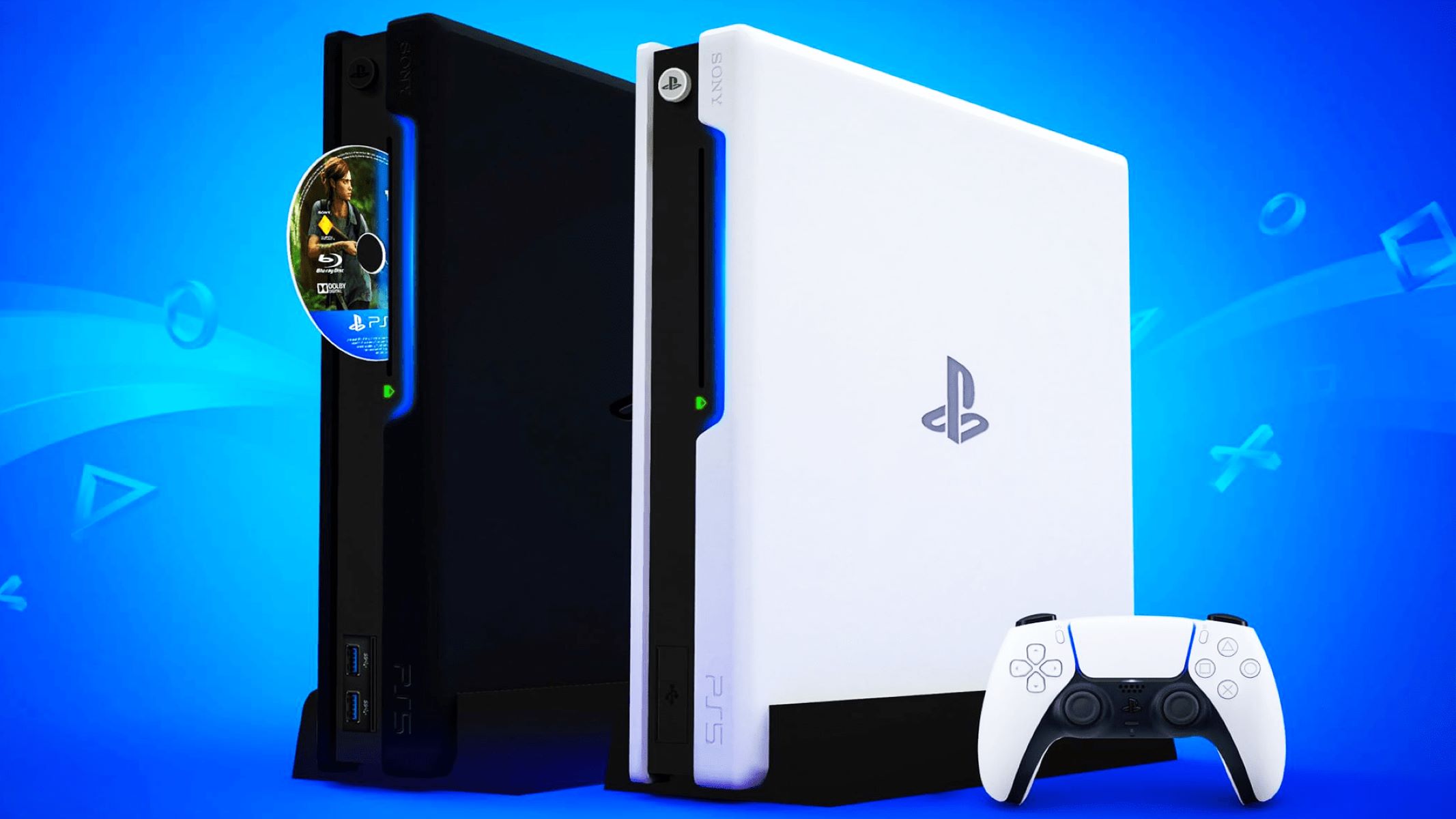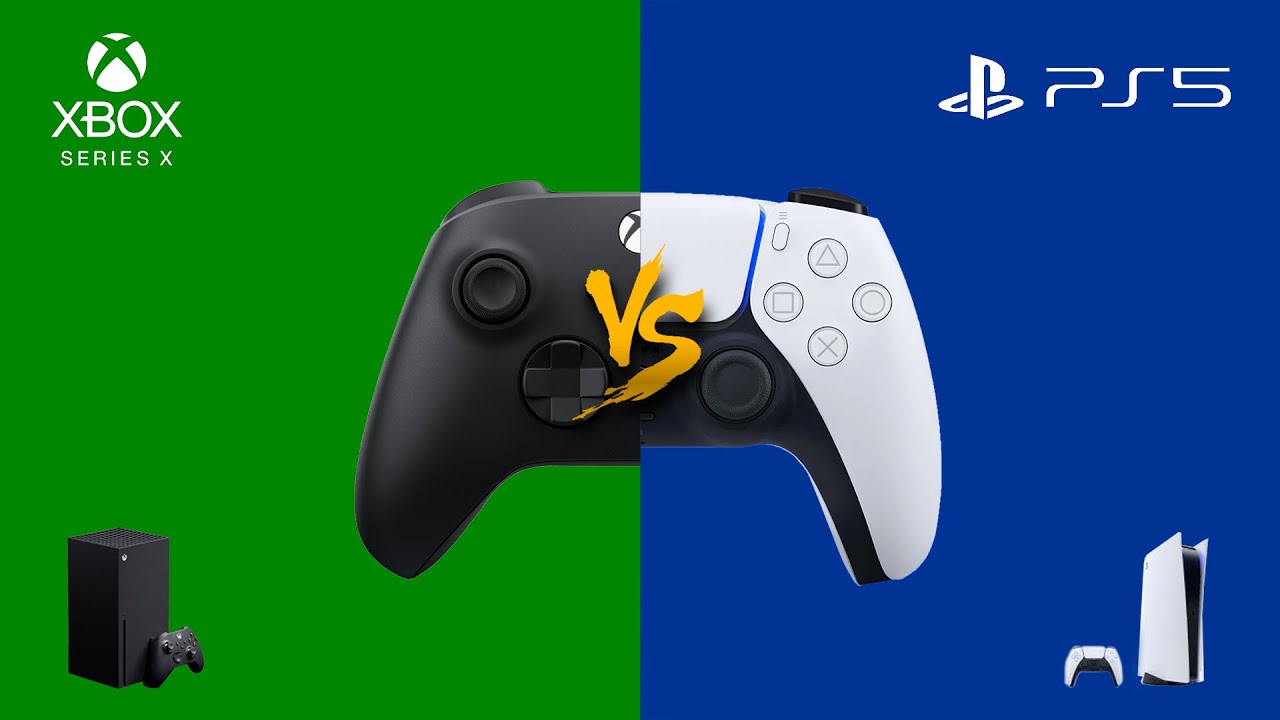Introduction
Welcome to the world of PlayStation! If you are a gaming enthusiast, you might be familiar with the term “backwards compatibility.” In the gaming industry, this refers to the ability of a video game console to play games from its previous generation. In this article, we will be focusing on the PlayStation 3 and its backwards compatibility feature.
The PlayStation 3 (PS3) was a game-changer when it was released in 2006. With its powerful hardware and innovative features, it quickly became a fan-favorite console among gamers worldwide. One of the standout features of the PS3 was its ability to not only play new games but also run games from its predecessor, the PlayStation 2 (PS2).
But what exactly does backwards compatibility mean for PlayStation 3 owners? It means that you can dust off your favorite PS2 titles and play them on your PS3 console without the need for an additional device. This level of compatibility offers a fantastic opportunity to relive those classic gaming moments and enjoy a vast library of games.
However, it’s important to note that not all PlayStation 3 models have the same level of backwards compatibility. Sony, the company behind the PlayStation brand, released several different versions of the PS3 over the years, and some models offer greater compatibility than others.
In this article, we will explore the different PlayStation 3 models and their respective levels of backwards compatibility. We will delve into the specific features and limitations of each model, so you can determine which one suits your gaming needs the best.
So, if you’re ready to embark on a journey through the world of PlayStation 3 and its backwards compatibility, let’s dive in and discover which PS3 models are the ultimate gaming machines for playing your cherished PS2 games!
What is Backwards Compatibility?
Before we delve into the details of PlayStation 3’s backwards compatibility, let’s first understand what this term actually means in the gaming world. Backwards compatibility refers to a console’s ability to play games from previous generations. In the case of the PlayStation 3, it means being able to play PlayStation 2 games on the newer PS3 system.
This feature is highly valued by gamers because it allows them to continue enjoying their older game collection without needing to keep multiple consoles hooked up or purchase a separate device. It provides convenience and reassurance that their investment in games from the previous generation is not wasted.
Backwards compatibility is achieved through the hardware and software capabilities of the console. The technology is designed to emulate the behavior of the previous generation console, allowing the newer console to run older games smoothly and accurately. This includes replicating the graphics, sound, and overall gameplay experience.
However, it’s important to note that achieving perfect emulation for every game is a complex task. Different games have varying system requirements, and compatibility issues may arise, resulting in certain games not working as intended on newer consoles.
Manufacturers like Sony typically release consoles with different levels of backwards compatibility. While some models may support a wide range of previous generation games, others may have limitations or only support a select few titles. It’s essential for gamers to be aware of these differences to make informed purchasing decisions.
Backwards compatibility is not merely a convenience for gamers; it is a testament to the legacy and evolution of the gaming industry. It allows new generations of players to experience older titles that hold historical and cultural value, preserving the heritage of gaming for future enthusiasts.
Now that we’ve covered the basics of backwards compatibility, it’s time to explore how it applies to the various PlayStation 3 models. Let’s dive into the world of PS3 and discover which models are the best choice for playing your favorite PS2 games!
Why is Backwards Compatibility Important?
Backwards compatibility holds significant importance for both gamers and the gaming industry as a whole. Let’s take a closer look at why this feature is highly valued by gaming enthusiasts.
First and foremost, backwards compatibility allows gamers to preserve their gaming investments. Over the years, players accumulate a collection of games from previous generations. By having a console that supports backwards compatibility, they can continue enjoying these cherished titles on a newer system without the need for additional hardware or keeping multiple consoles hooked up.
Furthermore, backwards compatibility enables gamers to experience the evolution of gaming. With each new console generation, games become more advanced in terms of graphics, gameplay mechanics, and storytelling. However, there is a certain charm and nostalgia associated with older games. Backwards compatibility bridges the gap between generations, allowing younger players to experience gaming history and older players to relive the memories of their favorite classics.
In addition to preserving gaming investments and experiencing gaming history, backwards compatibility also fosters community and social interactions. Games that were popular in previous console generations often have dedicated fan bases. By offering backwards compatibility, developers can ensure that these communities remain active and connected, allowing players to continue playing together, sharing strategies, and engaging in multiplayer experiences.
From a business standpoint, backwards compatibility is a feature that can drive console sales. People who have invested in a library of games from a previous generation are more likely to upgrade to a new console if it supports backwards compatibility. This feature provides reassurance to gamers and makes the transition to a new console generation smoother and more appealing.
Ultimately, backwards compatibility is an essential component of the gaming industry’s commitment to both innovation and preservation. It allows for the continuous enjoyment of games from previous generations while embracing the advancements of new technology. By catering to the desires of gamers and keeping the spirit of gaming alive, backwards compatibility has become a highly sought-after feature in the gaming community.
Now that we understand the significance of backwards compatibility, let’s explore the different models of the PlayStation 3 and their levels of compatibility to determine the best option for players looking to revisit their beloved PS2 games.
PlayStation 3 Models and Backwards Compatibility
When it comes to PlayStation 3 models, it’s important to note that not all versions offer the same level of backwards compatibility. Sony released several variations of the PS3 throughout its lifespan, and each model has its own compatibility limitations.
The first two models of the PlayStation 3, namely the 20GB and 60GB versions, were the most desired for their extensive backwards compatibility. These models featured a physical Emotion Engine, which allowed them to run PlayStation 2 games natively. In addition to PS2 games, they were also compatible with PlayStation 1 titles. These early models were highly sought after among gamers looking to revisit their favorite classics.
Following the initial release, Sony introduced the 80GB PlayStation 3 model. Unfortunately, this model no longer had the Emotion Engine, which resulted in reduced backward compatibility. While it could still play a wide range of PlayStation 2 titles, it relied on software emulation to achieve compatibility rather than the previous hardware-based approach.
The 160GB and 320GB versions of the PS3 further continued the trend of backward compatibility reduction. These models lacked the Emotion Engine and had limitations in playing PlayStation 2 games. Some games would be compatible, while others would not run properly or at all. It’s worth noting that these models continued to have full compatibility with PlayStation 1 titles.
It’s important to mention that Sony eventually stopped including backwards compatibility altogether in later versions of the PlayStation 3. The slim models, which were released after the initial fat versions, did not have any support for running PlayStation 2 games. These models focused solely on playing PlayStation 3 games and lacked the necessary hardware and software components for backwards compatibility.
With these differences in mind, it’s crucial for gamers who wish to play PlayStation 2 games on their PS3 to choose the appropriate model. Collectors and enthusiasts may prefer to seek out the original 20GB or 60GB models for their extensive compatibility, while others may opt for the later slim models if backward compatibility is not a priority.
In the next sections, we will dive deeper into the specific details and capabilities of each PlayStation 3 model, allowing you to make a more informed decision about which model is the best fit for your gaming needs.
The 20GB and 60GB PlayStation 3
The 20GB and 60GB models of the PlayStation 3 hold a special place in the hearts of PlayStation enthusiasts. These two early versions of the console are highly regarded for their extensive backwards compatibility.
Both the 20GB and 60GB models were equipped with a physical Emotion Engine, a key component that enabled them to play PlayStation 2 games natively. This hardware-based emulation ensured optimal performance and compatibility with a wide range of PS2 titles. Additionally, these models were also compatible with PlayStation 1 games, making them a versatile choice for retro gaming enthusiasts.
The inclusion of the Emotion Engine in these models added another layer of authenticity and accuracy to the gameplay experience. Players had access to the full library of PlayStation 2 games without any major limitations or issues. Whether it was reliving the epic journeys of Final Fantasy X or mastering the art of stealth in Metal Gear Solid 3: Snake Eater, the 20GB and 60GB PlayStation 3 models provided an excellent platform to revisit beloved classics.
It’s worth noting that aside from their exceptional backwards compatibility, these models boasted other notable features. Both models had multiple USB ports, memory card reader slots, and built-in Wi-Fi connectivity, enhancing the overall gaming experience.
However, despite their impressive compatibility and feature set, the 20GB and 60GB models had limited availability. Sony discontinued these models shortly after the initial release of the PlayStation 3, making them sought-after collector’s items today. Their rarity, combined with their unique ability to play PS2 and PS1 games flawlessly, has led to an increased demand for these models among gaming enthusiasts.
If you are a dedicated PlayStation fan with a substantial collection of PS2 games that you want to play on the same console, the 20GB and 60GB models are an excellent choice. While they may be harder to come by compared to later PlayStation 3 models, their superior backwards compatibility capabilities and added features make them highly desirable for gaming enthusiasts seeking a truly immersive retro gaming experience.
Now that we have explored the 20GB and 60GB models, let’s delve into the next PlayStation 3 model and its unique features and compatibility.
The 80GB PlayStation 3
The 80GB model of the PlayStation 3 brought some changes compared to the earlier 20GB and 60GB models. While the 80GB PlayStation 3 retained the ability to play PlayStation 1 games, it no longer had the physical Emotion Engine necessary for native compatibility with PlayStation 2 games.
Instead, Sony opted for software-based emulation to achieve backwards compatibility with PlayStation 2 titles on the 80GB model. This meant that the console used software algorithms to mimic the behavior of the Emotion Engine, allowing it to run a wide selection of popular PS2 games.
It’s important to note that while the 80GB model supported software emulation for backwards compatibility, it did not have full compatibility with all PlayStation 2 games. Certain titles may have experienced compatibility issues or may not have been supported at all. However, many popular and well-known PS2 games ran smoothly on the 80GB model, providing gamers with the opportunity to revisit some of their favorites.
In addition to its compatibility capabilities, the 80GB model also featured other enhancements. It included a larger hard drive compared to the earlier models, allowing players to store more games, videos, and media files. The 80GB PlayStation 3 also introduced the DualShock 3 controller, which incorporated motion-sensing capabilities and rumble feedback for a more immersive gaming experience.
Furthermore, the 80GB model of the PlayStation 3 was available in different bundles, such as the Metal Gear Solid 4: Guns of the Patriots edition and the MotorStorm pack. These bundles offered additional games and exclusive content, catering to fans of specific game titles.
While the 80GB PlayStation 3 lacked the native compatibility of its predecessors, it still provided a significant level of support for playing PlayStation 2 games through software emulation. This made it a popular choice for gamers who wanted to enjoy a selection of their PS2 favorites while also benefiting from the advancements of the PS3 console.
Now that we have covered the 80GB model, let’s move on to the next PlayStation 3 model and explore its unique features and compatibility.
The 160GB and 320GB PlayStation 3
The 160GB and 320GB models of the PlayStation 3 continued the trend of reduced backwards compatibility compared to the earlier versions. These models lacked the hardware components necessary for native compatibility with PlayStation 2 games, including the physical Emotion Engine found in the 20GB and 60GB models.
Instead, the 160GB and 320GB PlayStation 3 models relied on software emulation to achieve backwards compatibility with PlayStation 2 titles. While this approach allowed for some level of compatibility, it came with limitations. Some PS2 games wouldn’t run at all or might experience compatibility issues during gameplay.
Despite the reduced compatibility, the 160GB and 320GB models still offered the ability to play PlayStation 1 games. This expanded the gaming library and allowed players to enjoy the classics from the first PlayStation console.
Aside from the reduced backwards compatibility, the 160GB and 320GB PlayStation 3 models retained other features and enhancements. Both models came with a larger hard drive capacity, allowing for more game installations, downloadable content, and media storage.
Furthermore, the 160GB and 320GB models showcased sleeker and slimmer designs, making them more compact and aesthetically appealing compared to the earlier fat models. These slim models also consumed less power and produced less noise, contributing to a better overall gaming experience.
It’s important to note that the 160GB and 320GB models of the PlayStation 3 did not include the ability to play PlayStation 2 games as effectively as the earlier models. Gamers who were specifically interested in playing a wide range of PS2 titles might have found these models to be less suitable.
However, for players who primarily wanted to enjoy the vast library of PlayStation 3 games and a selection of PlayStation 1 titles, the 160GB and 320GB models still provided an excellent gaming experience.
Now that we have explored the 160GB and 320GB models, let’s move forward and examine PlayStation 3 models that are not backwards compatible.
Non-Backwards Compatible PlayStation 3 Models
In addition to the PlayStation 3 models that offered some form of backwards compatibility, Sony also released versions that did not support playing PlayStation 2 games. These non-backwards compatible models were introduced as part of the slim redesign of the console.
The non-backwards compatible PlayStation 3 models, which include the 120GB, 250GB, and 500GB versions, were designed to focus solely on playing PlayStation 3 games. These models lacked the necessary hardware and software components to run PlayStation 2 games effectively.
While it may be a disappointment for gamers who were looking forward to playing their favorite PS2 titles on the same console, the non-backwards compatible models still offered a range of features and improvements. The slim design made these models more compact and lightweight, occupying less space in entertainment centers.
Additionally, the non-backwards compatible PlayStation 3 models incorporated other enhancements, such as increased storage capacity and energy efficiency. These models featured larger hard drives, allowing for ample space to store game installations, digital content, and other media.
Furthermore, the non-backwards compatible models introduced various connectivity options, including built-in Wi-Fi, multiple USB ports, and HDMI output. These features enhanced the overall gaming experience by enabling players to connect to online multiplayer, use wireless controllers, and enjoy high-definition visuals on compatible displays.
It’s worth noting that while the non-backwards compatible models did not offer direct compatibility with PlayStation 2 games, select PS2 titles could be re-released or remastered as PlayStation 3 versions. These re-releases often included graphical improvements and additional features to take advantage of the capabilities of the PS3 console.
Ultimately, the non-backwards compatible PlayStation 3 models catered to the needs of gamers who were primarily interested in experiencing the vast library of PlayStation 3 games. These models provided an opportunity to fully immerse oneself in the world of PS3 gaming without the need to play older PS2 titles on the same console.
Now that we have explored the non-backwards compatible models, let’s move on to understanding how to determine if your PlayStation 3 is backwards compatible.
How to Determine if Your PlayStation 3 is Backwards Compatible
If you are unsure whether your PlayStation 3 (PS3) console is backwards compatible, there are a few methods you can use to determine its compatibility with PlayStation 2 (PS2) games. Here are the steps you can follow:
1. Check the model number: The first step is to locate the model number of your PS3 console. The model number can usually be found on the back or bottom of the console. Look for a series of letters and numbers that indicate the specific model.
2. Research the model number: Once you have your model number, search online to find out the specific compatibility of that particular model. There are numerous websites, forums, and official documentation available that provide detailed information on the backwards compatibility features of each PS3 model. Look for sources that provide reliable and up-to-date information.
3. Look for the presence of the Emotion Engine: If you have one of the earlier fat models of the PS3, you can check for the presence of the Emotion Engine chip. The 20GB and 60GB models had this hardware component, while later models did not. Opening up the console to examine the internal components should only be done by experienced individuals who are comfortable with the process.
4. Review official documentation: Sony, the manufacturer of the PlayStation brand, may have released official documentation or statements regarding the backwards compatibility features of their consoles. Check the official Sony website, support pages, or user manuals for any specific information on PS3 backwards compatibility.
5. Consult with experts or gaming communities: If you are still unsure about the compatibility of your PS3 console, reaching out to gaming experts, forums, or communities can provide valuable insights. Experienced gamers and enthusiasts who have knowledge of specific PS3 models can offer guidance based on their expertise.
Remember that backwards compatibility compatibility differs between PS3 models. Not all consoles have the same level of compatibility with PS2 games. Some models have extensive compatibility, while others may be more limited or not compatible at all. Understanding the capabilities of your specific PS3 model will help you make informed decisions when selecting and playing PS2 games.
By following these steps, you can determine whether your PlayStation 3 console is compatible with PlayStation 2 games and enjoy the nostalgia of playing your favorite classics on a single console.
Conclusion
In conclusion, backwards compatibility is a highly sought-after feature among gamers, allowing them to play games from previous console generations on newer systems. The PlayStation 3 (PS3) offered varying degrees of compatibility with PlayStation 2 (PS2) games, depending on the model.
The 20GB and 60GB models of the PS3 were considered the most desirable for their extensive backwards compatibility, thanks to the inclusion of the physical Emotion Engine chip. These models provided native compatibility with both PS2 and PS1 games and were highly valued by collectors and gaming enthusiasts.
The 80GB PS3 model and subsequent models, such as the 160GB and 320GB versions, relied on software emulation for backwards compatibility. While they offered some level of compatibility with PS2 games, certain titles may have experienced issues or may not have been supported at all. However, these models still provided opportunities to enjoy a selection of PS2 and PS1 games.
The slim versions of the PS3, including the 120GB, 250GB, and 500GB models, were not backwards compatible. Instead, they focused on providing an optimal experience for playing PS3 games and offered additional enhancements such as increased storage capacity and energy efficiency.
When determining if a PS3 console is backwards compatible, it is essential to check the specific model number, conduct research, and consult reliable sources to understand its compatibility features accurately. Online resources, official documentation, and gaming communities can be valuable sources of information.
Ultimately, the choice of a PlayStation 3 model depends on individual gaming preferences and the desire to play PS2 games on the same console. Each model offers its own unique features and compatibility, allowing gamers to make an informed decision based on their specific needs.
Whether you opt for a backwards compatible model or choose a non-backwards compatible model, the PlayStation 3 offers a vast library of games and a memorable gaming experience. So, grab your preferred model and get ready to immerse yourself in the world of PlayStation gaming.







